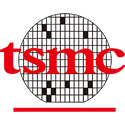
Phison Predicts 2024: Security is Paramount, PCIe 5.0 NAND Flash Infrastructure Imminent as AI Requires More Balanced AI Data Ecosystem
Phison Electronics Corp., a global leader in NAND flash controller and storage solutions, today announced the company's predictions for 2024 trends in NAND flash infrastructure deployment. The company predicts that rapid proliferation of artificial intelligence (AI) technologies will continue apace, with PCIe 5.0-based infrastructure providing high-performance, sustainable support for AI workload consistency as adoption rapidly expands. PCIe 5.0 NAND flash solutions will be at the core of a well-balanced hardware ecosystem, with private AI deployments such as on-premise large language models (LLMs) driving significant growth in both everyday AI and the infrastructure required to support it.
"We are moving past initial excitement over AI toward wider everyday deployment of the technology. In these configurations, high-quality AI output must be achieved by infrastructure designed to be secure, while also being affordable. The organizations that leverage AI to boost productivity will be incredibly successful," said Sebastien Jean, CTO, Phison US. "Building on the widespread proliferation of AI applications, infrastructure providers will be responsible for making certain that AI models do not run up against the limitations of memory - and NAND flash will become central to how we configure data center architectures to support today's developing AI market while laying the foundation for success in our fast-evolving digital future."
"We are moving past initial excitement over AI toward wider everyday deployment of the technology. In these configurations, high-quality AI output must be achieved by infrastructure designed to be secure, while also being affordable. The organizations that leverage AI to boost productivity will be incredibly successful," said Sebastien Jean, CTO, Phison US. "Building on the widespread proliferation of AI applications, infrastructure providers will be responsible for making certain that AI models do not run up against the limitations of memory - and NAND flash will become central to how we configure data center architectures to support today's developing AI market while laying the foundation for success in our fast-evolving digital future."





















































